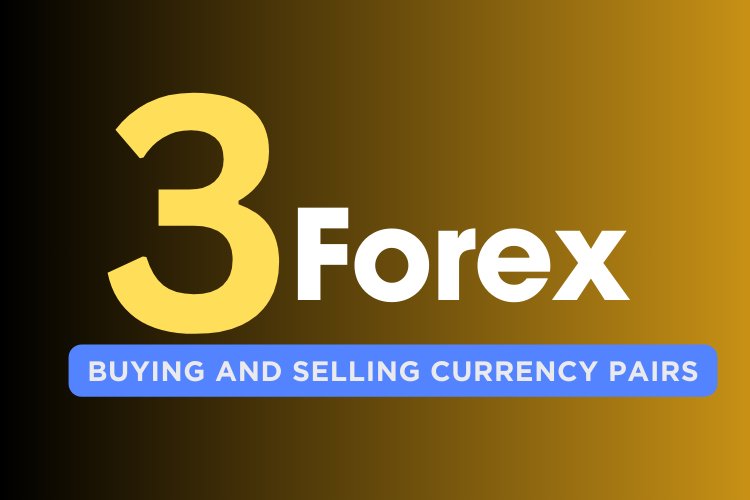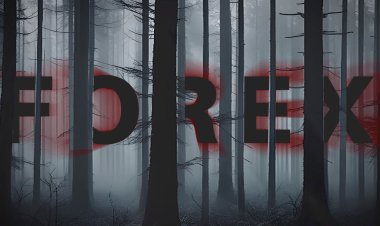Class 3: Buying and Selling Currency Pairs
"Dive into the essentials of forex trading with Robbie Garnier in Class 3: Buying and Selling Currency Pairs. Learn the basics without the bore, as Robbie simplifies currency pairs, majors, crosses, and exotics for beginner traders. Understand the dynamics of the forex market, explore the most traded currency pairs, and get ready for advanced trading concepts. Perfect for those who want to grasp forex trading without getting lost in technical jargon."

Hey there, this is Robbie Garnier, and welcome to class number three, which is buying and selling currency pairs, I gotta tell you something. All right, I'm not going to get too technical, and, do you know, in these classes, it's way too boring. And I'm too cool for that. Okay. So it's up to you. You need to join some nerdy advanced classes to know more about, you know, the trading stuff and technicalities of that, right? Okay. So, like I said, I can be too cool for that. Okay. So I'm going to tell you about all the technical things that are running around in this industry. But for advanced training on that, just find some other nerd.
Did I say something else? I don't belong to that again; I'm too cool, man. Okay, let's get into class number three. We have covered what forex trading is, right? So if you don't, just go back to class number one. But let me tell you that, again, forex trading is the simultaneous buying of one currency and selling of another.
Now listen, currencies are traded through a forex broker or a CFD provider and are traded in pairs, like a couple, okay? Currencies are quoted about another currency, like marriage or sometimes a breakup. And CFD, don't worry about it right now; we'll get into that later. It's called a contract for difference. We'll cover it later. For example, the euro and the US dollar—that is, EUR slash USD—that's how they can be paired, okay? Or the British pound and the Japanese yen, like GBP, slash (/) JPY. When you trade in the forex market, you buy or sell in currency pairs. Imagine each currency pair constantly in a tug-of-war; it's like in a marriage; you can, after two months of honeymoon, have each currency on its own side of the rope. An exchange rate is the relative price of two currencies from two different countries, like fighting over who's got the bigger whatever.
You get it.
Exchange rates fluctuate based on which currency is stronger at that moment. There are three categories of currency pairs: the majors, the so-called majors, the crosses, and the exotics. When I say exotics, don't get too excited; nothing much happens unless there are some exotic Hulu dancers. Well, the major currency pairs always include the US dollar, do you get it? Okay, mine is bigger than yours. Okay, that kind of attitude—they got that stick up their bum. Okay, I'm the US dollar; I can do anything with this kind of attitude, which is not helping them these days. Cross-currency pairs do not include the US dollar. Crosses that involve any of the major currencies are also known as miners. Do you get it?
Cross-currency pairs do not include the US dollar. Crosses that involve any of the major currencies are also known as the miners. Exotic currency pairs consist of one major currency and one currency from an emerging market (EM, okay?). Now let's get into the major currency pairs. The currency pairs listed below are considered the majors. These pairs all contain the US dollar, USD, or buck on one side and are the most frequently traded. Let's see, EURUSD is the most liquid; we'll get into liquidity later.
Okay, not right now. Okay, don't get confused; it is the most sought-after currency pair in the world. Well, there are always buyers, and there are always sellers. That means, okay, it's the most liquid; it's available all the time. While there are eight major currencies, there are only seven major currency pairs compared to crosses and exotics. The price moves more frequently with the majors, which provides more trading opportunities. Let's say a currency pair; let's say, for example, EURUSD. The countries involved are Eurozone slashes. United States, we call them, FX nerds call them EURUSD, USDJPY, United States, Japan, YEN, GBPUSD, United Kingdom, United States, pound-dollar, like that, okay, go read it up, look it up.
The majors are the most liquid in the world. When it comes to liquidity, it is used to describe the level of activity in the financial market. In forex, it's based on the number of active traders buying and selling a specific currency pair and the volume being traded. The more frequently traded something is, the higher its liquidity. Like I said, EURUSD. Now we come to major currency pairs, cross-currency pairs, or minor currency pairs.
Currency pairs that include any two of the major currencies except the US dollar are known as cross-currency pairs, or simply as crosses. Major crosses are also known as minors. We talked about it. While not as frequently traded as the majors, the crosses are still pretty liquid and still provide plenty of trading opportunities.
Now look it up, okay, you can look it up for Euro crosses, like EURCHF, called EUROSWISI, I would like to call SISI, no pun intended, there are Yen crosses, EURJPY, GBPJPY, CBPJPY, GBPCHF, GBPAUD, GBPCAD, and other crosses, AUDCHF, AUDCAD, AUDNZD, CADCHF. When it comes to exotic currency pairs, there is not so much excitement there; not much is happening there. It's like a lot of currency pairs from Brazil, Mexico, Chile, Turkey, and Hungary. You look it up; the currency pairs are not worth the time here. Now we have, okay, now like Egyptian currencies, like the United States, European Union, United Kingdom, Japan, Australia, and New Zealand, the so-called big %$%^&.
Now we have the Scandis. Scandinavia is a sub-region of Northern Europe with strong historical, cultural, and linguistic ties; okay, Denmark, Norway, and Sweden comprise the Scandis. And now we have CEE currencies, which stand for Central and Eastern Europe, like, for example, Central Europe, the Baltics, Eastern Europe, and Southeast Europe, the Balkans, usually meaning former communist states from the Eastern Bloc. Look it up. And now we have the BRICS. BRICS is the acronym coined for the Association of Six Major Emerging National Economies. Like we talked about emerging markets, the EM consists of Brazil, Russia, India, Indonesia, China, and South Africa.
Okay, so now some more countries are getting added to BRICS; they're called BRICS Plus, and the waiting members are Argentina, Egypt, Ethiopia, Iran, Saudi Arabia, and the UAE. Let me summarise that. Okay, that was a lot of information in currencies, but you just raised your FXIQ points. Right, listen, I can elaborate. Right, like I said, I'm too cool for that. Go find a nerd. I'm not a nerd. Let's summarise what you learned in a series of questions. What is a currency pair in forex? A currency pair is a pairing of currencies where the value of one is relative to the other. For example, GBPUSD is the value of the British Pound relative to the U.S. dollar.
What are the major currency pairs? Major currency pairs, or majors, are those that include the U.S. dollar and are the most frequently traded. There are seven of them: EURUSD, USDJPY, GBPUSD, USDCAD, USDCHF, AUDUSD, and NZDUSD. What are the currency crosses? Currency crosses, as we call them, are the more frequently traded currencies that do not include the U.S. dollar in their pairing. Those include EURGBP, EURCAD, GBPJPY, EURCHF, EURJPY, etc. How many currency pairs exist?
There are hundreds of currency pairs in existence, but not all can be traded in the FX market. The United Nations currently recognizes 180 currencies. If you were to pair each currency with another, it's a lot, you know, and there's nothing much happening other than these, you know, the so-called majors and the crosses, right, you know, which are available to buy and sell at any time. If you pick one country from somewhere and pair it with USD again, nobody is going to buy that, you know. If you buy it, who are you going to sell it to? Nobody is there to buy. So people tend to flock to these majors like vultures on a carcass, which is left over after the big guys have eaten the juicy parts.
All right, again, this is Robbie Garnier from TradeFxP signing off. See you at class number four! Good luck.



 admin
admin 










